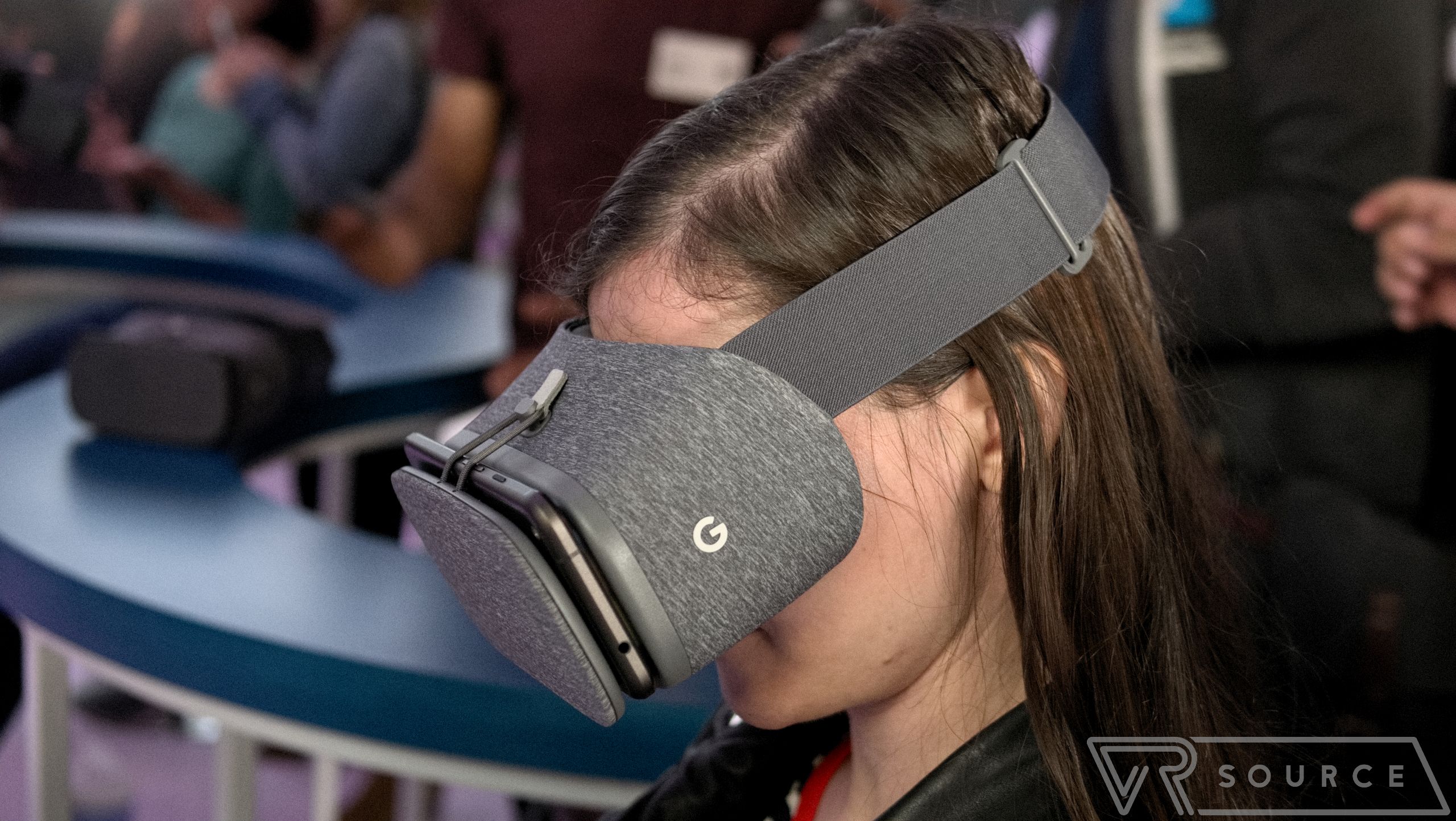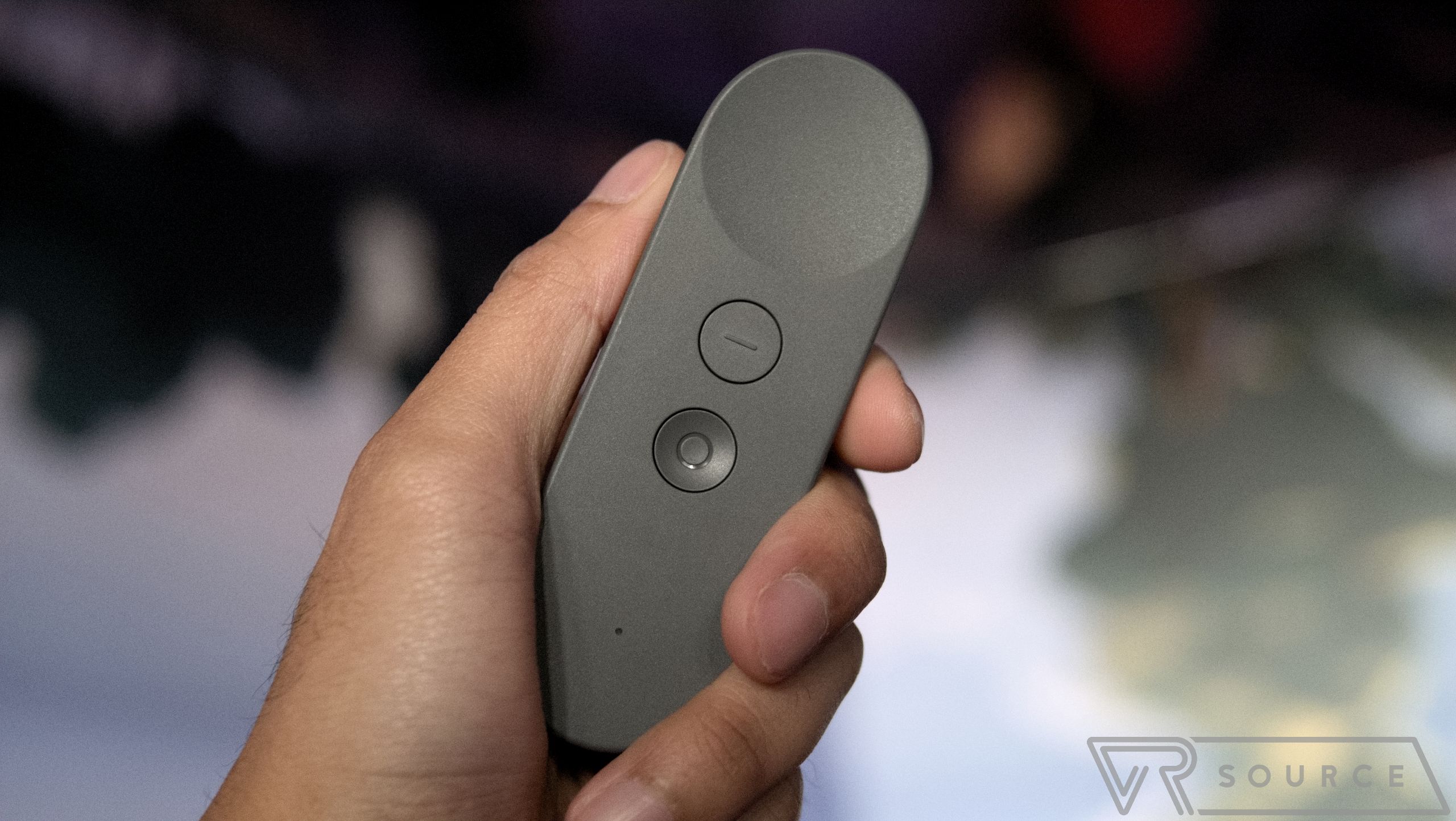Affiliate links on Android Authority may earn us a commission. Learn more.
Google Daydream View hands on
Published onOctober 5, 2016
So long Cardboard, hello Google Daydream View. During Google’s announcement today in San Francisco, the company unveiled its latest mobile VR headset, which will work in conjunction with Daydream-supported smartphones – and right off the bat, that includes the newly announced Google Pixel and Pixel XL smartphones.
While the Google Daydream View shares some quaint characteristics of current mobile VR headsets in circulation right now, it distinguishes itself first and foremost with the type of material it’s fashioned out of. Unlike its rivals, which heavily rely on plastic, the Daydream View has more of an inviting persona thanks in part to the mesh material that covers the entirety of the headset – a material dubbed as textiles. It definitely provides for better texture than the cold plastic we’re accustomed to getting with competing headsets.

And surprisingly enough, it’s remarkably lightweight with some padded cushioning that lines the area that goes around your face. Visually, the Google Daydream VR looks like something that would be more apt to complement your outfit – as opposed to the futuristic, sci-fi like stylings of other headsets. Now, as much as we like its particular design and material, our issue mainly lies in the single band that’s used to fasten it tightly around our head.
Quite simply, it’s not enough to support the entire weight of the headset, along with the phone that’s in there. Don’t get us wrong, it feels super comfortable to wear, but since it lacks that other strap that goes over the head, much like the Samsung Gear VR’s implentation, we end up finding ourselves constantly propping or supporting the headset with our hand – just to stabilize and keep it in place. Aside from that, we have almost no qualms about its fit and feel.

Once the Google Pixel is safely positioned into place, we’re immediately transported to the main menu. Using the accompanying remote, which reminds us a lot of the Google Nexus Player’s remote because of its simplicity, we’re able to direct ourselves in the VR main menu. The controller itself is somewhat similar to the HTCVive controllers, in how it’s able to precisely track movement in space. For example, you see a virtual representation of the controller in VR space, so twisting, tilting, or moving it in space are all tracked.
In our first demo, we got treated to the same dinosaur demo via YouTube 3D that Google showed off during its announcement – so you can say that we were just sitting for the ride with this one. Despite that, the Daydream VR managed to deliver some sharp details and enough responsiveness to make for an immersive experience.

The second demo, however, provides more of a detailed look at Daydream’s capabilities, as the demo relied on the controller to manipulate a ball through a maze from point A to point B. As we’re tilting the controller to get the ball moving to particular points, we have to admit that it’s pretty responsive for the most part. That said, we can tell that there’s a subtle latency with what we see in the VR world from what we’re doing with the controller in real time.
It’s not bad, honestly, but we’re dying to see even better experiences to gauge its true worth. The majority of what we’ve experienced so far have been static experiences, meaning that we’re still doing the same sitting and looking around position. For now, the only thing we can say separating this experience, over what we’ve been getting with Cardboard, is the use of the controller with the experience. At $79 for the Daydream View when it comes out in November, it’s just a smidgen lower in price point that some current headsets around.